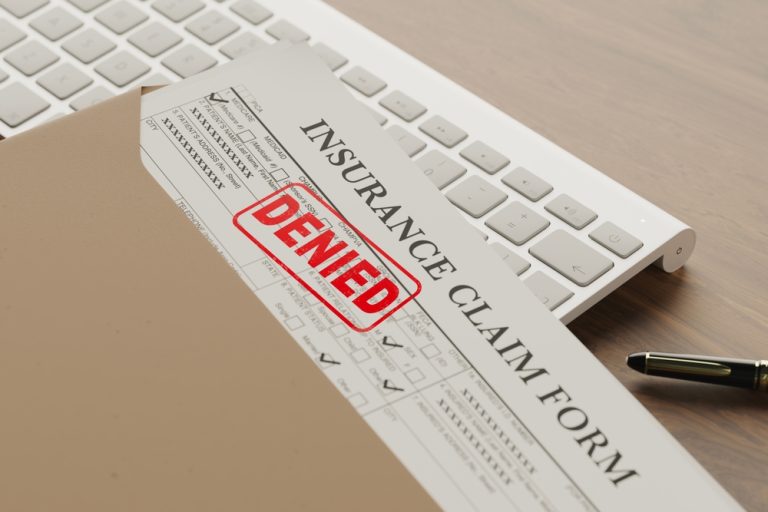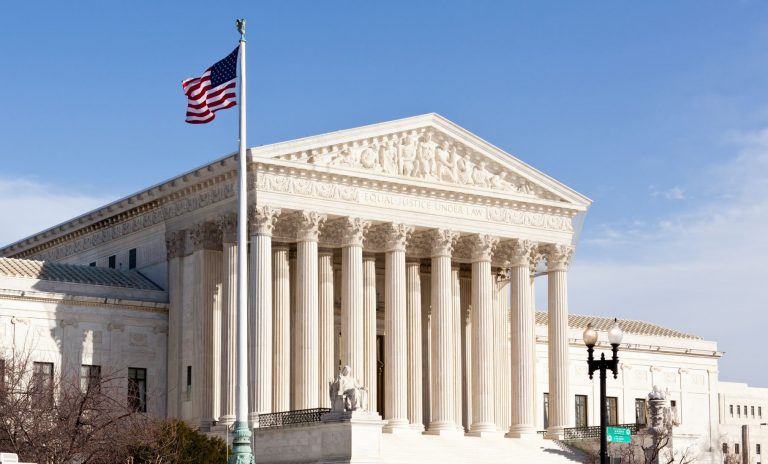TCPA Fax Class Actions Could Be An Endangered Species
TCPA Fax Class Actions Could Be An Endangered Species
Originally published on Law360 on August 1 2019.
A number of emerging trends and events are likely to significantly limit the ability of the plaintiffs to successfully bring fax class actions under the Telephone Consumer Protection Act (TCPA). The underlying reason for defense attorneys’ renewed optimism is recent technological and market changes, as well as new Federal Communications Commission (FCC) leadership. If e-faxes are excluded from the definition of the TCPA, class actions become problematic because the fax log would not allow a court to determine whether class members received conventional faxes or e-faxes. As a practical matter, this means that the plaintiff, in proving his or her own case, does not necessarily prove that any other class members also received a fax.
Specifically, one under-utilized legal defense is that the receipt of an e-fax by a computer is not covered by the TCPA based on the clear language of section 47 USC § 227(b)(1)(C). It provides that unsolicited facsimile advertisements are illegal if they are sent by a telephone facsimile machine, computer or other device to a telephone facsimile machine.
The FCC’s Inconsistent Stance on E-Faxes
Prior FCC leadership adopted policies that treat e-faxes as equivalent to a conventional fax, despite the fact that the communication is received as an email by a computer. Further, receipt as an email does not shift advertising costs by automatically printing the advertisement, using the recipient’s ink and paper. Nor does an e-fax “occupy the recipient’s computer” so other messages cannot be received. These concerns were the primary justifications for the enactment of the fax provisions of the TCPA in 1991.
The FCC relies almost exclusively on the statutory definition of telephone facsimile machine found in 47 USC § 227(A)(3): “The term “telephone facsimile machine” means equipment which has the capacity (A) to transcribe text or images, or both, from paper into an electronic signal and to transmit that signal over a regular telephone line, or (B) to transcribe text or images (or both) from an electronic signal received over a regular telephone line onto paper.”
This argument is nonsensical for a number of reasons. In 1991, desktop computers were the dominant form of business computers and could easily be connected to printers. Why would Congress exclude computers from the receiving end of the substantive statute, yet interpret the definition of “telephone facsimile machine” to include computers?
The inclusion of e-faxes received by a computer is inconsistent with the clear language of the statute. The 2017 decision of the Washington, D.C. Circuit in Bais Yaakov of Spring Valley v. FCC[1] rejected the extension of the opt-out disclosure requirements for solicited faxes, because the statute only applied to unsolicited faxes. Then Judge Kavanaugh made it clear that the agency could not justify a policy that either contradicted the statute or did not affirmatively permit such a policy. The court rejected the FCC’s argument that it could act “as long as Congress has not prohibited the agency action in question.” The court emphasized that this theory is backwards The FCC may only take action that Congress authorized.
The “capacity” argument suffers from another fault – over-breadth. In ACA International v. FCC,[2] the D.C. Circuit held that the FCC’s interpretation of automatic dialing system (ADS) was arbitrary and capricious because any smartphone could easily function as an ADS by simply downloading an application. The same over-breadth problem exists regarding faxes because smartphones or almost any other modern computer device can transmit fax signals and have them printed. In other words, your smart phone is not only an ADS, it is a “fax machine.” The ACA court also suggested that the statute requires that the ADS was used to call the recipient in order to trigger the statute.
The Argument For and Against E-Faxes in TCPA Class Actions
A recent white paper submitted to the FCC regarding the Telephone Consumer Protection Act was filed in support of its Petition to exclude e-faxes from the scope of the statute.[3]
The white paper combines the statutory arguments, along with evidence of the minor role of commercial faxing especially compared with emails and the internet. Both emails and junk mail surpass the significance of commercial faxes 100,000-fold. Additionally, the punitive minimum statutory damages combined with strict liability standard provides further reason to require strict adherence to the clear language of the statute. There is no justification to artificially expand the TCPA’s reach by shifting the burden of proof as to how the communication was received to a defendant, when the recipients have the exclusive control of that information.
Some opinions have suggested that the statutory minimum damages are a “bounty” to encourage enforcement for enforcement sake, as if that would justify the statute when no harm has occurred, and the provisions of the statute have not been violated. Other courts have suggested that the time it takes to review a fax is an independent justification for the statute.
How the fax is received: Some courts and the FCC in the 2015 WestFax order,[4] have identified new justifications to facilitate class treatment. One argument advanced by the FCC in 2003 and 2015 was that the sender does not know how the facsimile will be received. However, this factor is irrelevant in a strict liability statute which must be restricted to circumstances where consumer injury is likely to occur, and more importantly, within the confines of the statute. The communication either comes within the statute or not –it is a binary choice dictated by statutory language. This is particularly important considering the potentially destructive size of the class action judgment.
Privacy issues: The privacy concerns (seclusion) that led to enactment of the TCPA were largely confined telephone calls made to “residential telephone lines” or calls to hospital rooms and medical facilities, emergency facilities such as fire, police and poison control centers, calls that shifted the cost of the call to the recipient, and “robocalls.” The Congressional findings of fact consistently referred to privacy interests in the context of residential telephone lines.
A violation of the First Amendment: The First Amendment argument becomes a powerful reason to reject such arguments in order to avoid declaring the TCPA unconstitutional. The white paper confronts these justifications based upon the First Amendment with an emphasis on the potential value of all speech and the draconian consequences of a statute with strict liability minimum damages. New York Times v. Sullivan, [5]. It is sometimes forgotten that the New York Times v. Sullivan decision emphasize the large punitive damage award available under state statutes that required no showing of actual damages.
There is a significant probability that strict scrutiny will apply under the 2015 United States Supreme Court opinion in Reed v. Town of Gilbert [6] and subsequent Supreme Court decisions that require the rigorous strict scrutiny test if the content of the speech must be considered in determining whether the regulation applies. There is little doubt that the TCPA does not cover all commercial speech. “Informational” speech is purportedly covered while law firms seeking to hire new lawyers are exempt since employment is not advertising property, services or goods under 47 U.S.C. 227 (a)(5). That section only prohibits unsolicited advertisements of “the commercial availability or quality of any “property, goods, or services.” Additionally, Courts in some circuits permit discovery to determine whether an advertisement that is not facially commercial might have a hidden commercial purpose, thus coming within the reach of the statute.
As to the argument that an e-fax requires cause a recipient to waste time and that review time justifies the no fault draconian damages the “injury” is the same as emails or junk mail which are vastly more pervasive. Such a purported justification is facially insufficient to support a restraint on commercial speech. See Bolger v. Young’s Drug Products (Administrative rule against contraceptive ads could not be justified because “the short, though regular journey form mailbox to trash can is an acceptable burden, at least as far as the Constitution is concerned.”).
Harm caused by e-faxes: The Central Hudson Gas & Electric Corp., v. Public Service Commission of New York[7] test requires the regulation on commercial speech: (1) advances a substantial state issue, (2) “directly advances the important state interest.” 3) Is not broader than necessary to fulfill its purpose .The support of the significant state interest must not be “remote” or provide only “ineffective support to the state interest.” Even if the harms are real and the restriction advances the statute interest, the government must also show that that the harm cannot be addressed adequately by a narrower regulation. The “fit” does not have to be perfect, but it cannot be so under-inclusive in restricting speech that it does not substantially reduce the harm that statute seeks to prevent. Nor can the regulation be over-inclusive and include speech that does not cause the harm the statute was intended to prevent.
The core question becomes what is the evil that the TCPA intended to prevent if there is no shifting of advertising costs through ink and paper, and the computer is not occupied so that faxes could not be received. Even if one takes the extreme view that voluntary printing still creates a statutory injury, there would be no justification for assuming that all recipients suffered that injury simply because the class representative’s e-fax was printed (perhaps to have a cause of action).
It is also over-inclusive because as presently misinterpreted includes e-faxes that do not cause the harm Congress intended to prevent. In fact, in WestFax the order conceded, “We understand that the harm to recipients may be the same whether the e-fax begins as a fax or an email.”[8] The problem is the disfavored treatment of the rare e-fax compared to the omnipresent email.
But the Central Hudson test could not be met because in the contemporary world the fax provisions only make sense when a party that receives conventional fax – at most. The TCPA fax provisions are under-inclusive if the goal is to prevent the wasted time because reading an email or junk mail causes at least the same time to review. If that is the purpose, why doesn’t the statute include the vastly more numerous commercial emails, or for that matter junk mail?
But even the receipt of a traditional fax is subject to a first amendment attack because the aggregate harm to society has dramatically lowered due to the rapid contraction of the fax market. Faxing is a technology that has lost out to the much cheaper, common and useful computer connected to the internet. The 2016 DMA Statistical Year Book showed email 82% in 2015 and direct mail 79.8% in 2015. Faxing was not listed. This decision is not a recent development in 1998, emails were not included in the 1999 DMA Statistical Year Book. In 2000 outbound faxes fell from 23% in 1999 to 12% in 2000. During the time period emails to customers increased to 28% to 42% and emails to prospects increased 23 to 26% by 2008 faxing was no longer included in the DMA Statistical Year Book.
The simple truth is that the TCPA fax provisions can no longer be justified, especially as to e-faxes and the wide variety of other communications that do not cause any of the harms that the TCPA fax provisions were intended to prevent. The government has the burden of proof and there are no reliable statistics to support a finding of substantial public harm.
The plaintiff’s bar has prevailed based upon fax logs that were used to show “faxes” received by specific “prospects.” They have been armed with the FCC orders based on 2003 technology and outdated market share assumptions, and the Hobbs act barring Federal District courts from invalidating those orders. The FCC orders include all e-faxes, if not every variation of a converted conventional fax into a covered transmission even though it arrives from the internet to a computer.
Finally, a key reason for optimism is the new majority of the FCC led by Commissioner Pai. The current majority have been highly skeptical of the realities of class action fax cases, where the statutory damages are entirely out of proportion with actual damages. For those who have doubts about the argument that private enforcement of the TCPA fax provision has been a national scandal, I invite you to consider the history of B2B. B2B was a small fax marketing company that twelve federal courts have referred to as a FAX “Typhoid Mary” that misled small businesses to believe that the faxes were legal. B2B’s clients were sued in approximately 100 cases. B2B earned small fees that were almost always under $1,000 and generated tens of millions of dollars of potential liabilities for their customers, sometimes even in a single or small number of transactions. Yet, we are unaware of a single example where plaintiff’s counsel obtained even an injunction against B2B.
Doug Brown is a partner in the Orlando office of RumbergerKirk, where he represents clients in commercial litigation with an emphasis on consumer defense claims under the Federal Trade Commission Act (FTC Act), the Telephone Consumer Protection Act (TCPA), and the Florida Deceptive and Unfair Trade Practices Act (FDUTPA), also known as Florida’s “Little FTC Act.” He handles litigation and disputes between manufacturers and dealers, as well as federal and state RICO claims. Doug also routinely represents clients in class action litigation. Samantha Duke is a senior associate who works in the same areas and assisted Doug Brown with the white paper to the FCC, along with Steven Augustino at Kelley Dreye & Warren LLP.






